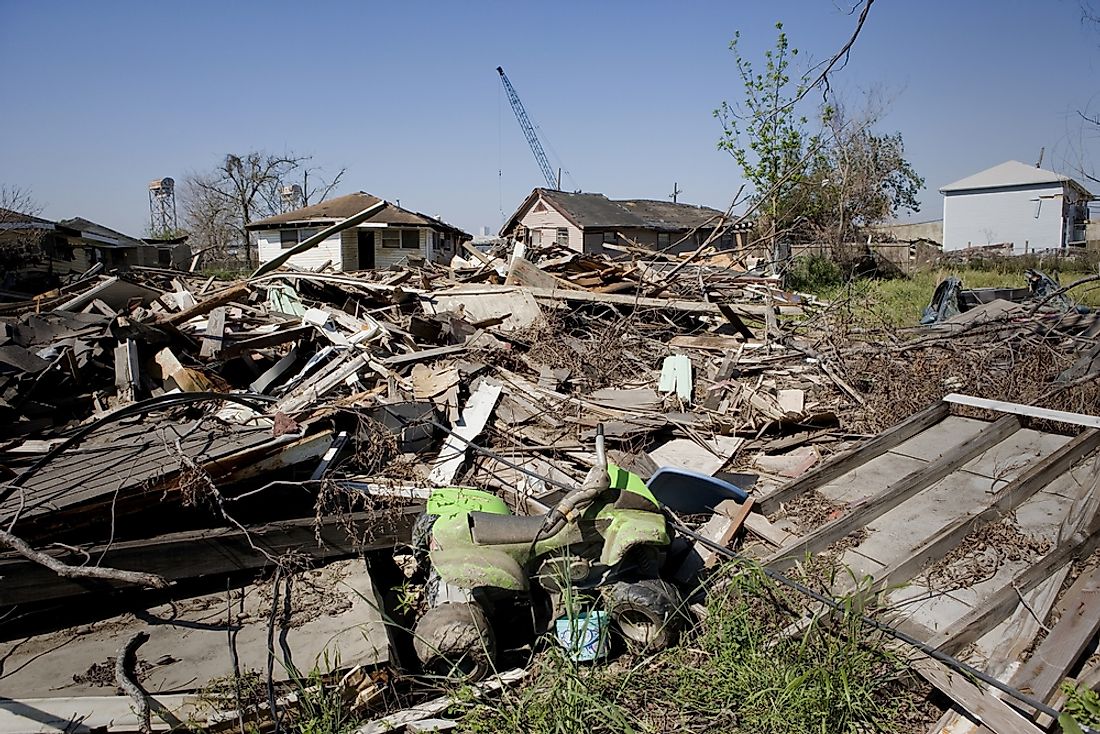The Worst Storms of All Time - Hurricane Katrina

Storms are some of the most common occurrences around the world and are usually accompanied by strong winds and rain or snow. The presence of storms is generally dependent on a region's climate with some areas being more prone than others. However, there are storms, and then there are hurricanes.
Hurricanes are violent storms that typically occur in tropical and subtropical regions. A storm receives the title of a hurricane once the sustained winds achieve speeds of 74 mph. Large numbers of hurricanes arise within a period referred to as the hurricane season which really begins at the beginning of June and ends in late November. It was the Hurricane Season of 2005 when Hurricane Katrina hit the southeastern United States, changing the way that American society looked at disaster prevention and response protocol forever.
Hurricane Katrina
In August 2005, Hurricane Katrina emerged after the fusion of a tropical wave and a tropical depression. The storm intensified into a hurricane approximately two hours before hitting land, and for a short period, it decreased in intensity to a tropical storm once again. When Katrina arrived within the waters of the Gulf of Mexico, it rapidly grew in intensity until it was classified as a Category 5 hurricane. While within the Gulf of Mexico, the hurricane achieved maximum intensity. Before Hurricane Katrina hit land a second time, the power lowered, and it was classified as a Category 3 hurricane. Winds within hurricane Katrina reached a maximum sustained speed of about 175 mph and when it hit land the second time the wind was at speeds of 125 mph. For a while, Hurricane Katrina held the record for the strongest hurricane within the Gulf of Mexico until the rise of stronger hurricanes such as Wilma and Rita.
Impact
Katrina caused large numbers of deaths and destroyed property of significant value. The hurricane caused considerable damage to structures in New Orleans that led to flooding which resulted in nearly 80% of the city being under water. The first time Katrina hit land it resulted in local flooding which significantly damaged close to 100 homes. Close to 1.5 million people were left with no power after the destructive impact of the hurricane brought down power lines. St. Bernard Parish within Louisiana was one of the most affected areas due to the flooding after various control mechanisms failed to withstand the onslaught of the hurricane.
Hurricane Katrina also led to significant political fallout as it led to the resignation of many high ranking officials.The governor of Louisiana together with the mayor of New Orleans also faced significant criticism over their handling of the crisis. One of the most senior officials who was forced to resign was Michael Brown who at the time served as the head of the Federal Emergency Management Agency (FEMA). FEMA was harshly criticized for their inadequate response and attention to those affected by the disaster, especially when it came to low-income residents. Reports that residents were dying of thirst, starvation, and violence after the worst of the storm's path had passed caused media outrage and mass panic. Many people worried about New Orlean's natural disaster readiness, as the city lies in a hurricane-prone area. Ultimately, Hurricane Katrina led to the tragic demise of 1,245 individuals, making it one of the worst natural disasters to ever have occurred in United States history and one of the worst hurricanes of all time.











